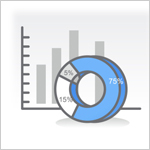 As an agency we do a lot of work with consumer products and in particular commodity boards including Highbush Blueberries, Florida Sweet Corn, Pure Canadian Maple Syrup and many others. We’ve managed to grow the digital/social presence for these organizations over the years and have continually received investment to grow and maintain their digital/social ecosystem for them.
As an agency we do a lot of work with consumer products and in particular commodity boards including Highbush Blueberries, Florida Sweet Corn, Pure Canadian Maple Syrup and many others. We’ve managed to grow the digital/social presence for these organizations over the years and have continually received investment to grow and maintain their digital/social ecosystem for them.
With clients, agencies and marketers getting smarter questions begin to arise around digital’s “true value,” ROI and contribution to offline sales. How far does an advertisement, like, pin or retweet really contribute to sales? When offline sales are a brand’s only form of commerce, addressing questions of this nature is a bit challenging. As technology has evolved, the ability to connect online to offline is not a thing of the past and can now be a part of a brand’s digital strategy.
Connecting online activity and engagement around Blueberries, Corn or Maple Syrup to offline sales is still emerging and is really quite new. It is quite a lofty goal, which some digital channels may not yet be able to fully connect. For display advertising, the use of big data and sophisticated targeting technology now allows us to target produce buyers (or whatever specific product you sell) and measure how effective those ad campaigns contributed to actual product purchase.
What’s involved with big data and how does it work?

1. Collect Customer Purchase Data from Grocery Stores:
The data provider we found works with thousands of retailers and hundreds of grocery store chains. They collect customer data and mine it in an effort to tie what you actually buy to your physical location. With this data, we have now learned exactly where our buyers live.

2.Track Households/Buyers with Cookies:
Now that we know what each household buys and their location we can begin tracking what sites they visit online through the use of cookies.

3. Serve Ads:
With all of our known buyers in a “cookie pool” we can now serve them relevant product ads wherever they browse on the internet.

4. Re-evaluate Purchase Data:
With an ad campaign delivered and a brand knowing that their message hit current/past buyers of their product, it’s time to take another look at product purchase data around the duration of the campaign.

5. Measure & Report Data:
Having a data provider evaluate look at customer data and who actually saw/interacted with our ads we can begin to see sales lift and really calculate the ROI of a digital advertising campaign. Success is tracked by comparing users who were exposed to the ads to users who weren’t exposed to the ads. Having a “control” and “experiment’ group we’re able to see exactly what type of sales our campaign drove offline at the grocery store due to the use of targeting and purchase data.
Not only are final sales and impact measured, but demographics are deeply evaluated to understand the effectiveness of the targeting. Initially a brand might think that “moms 25-45” are their target market, but having connected purchase data ties it all together and allows a brand to fully discover who their true audience might be.
Big Data Flaws?
As the use of big data has emerged over the last few years many challenges reside in this tactic’s future. The overall use of cookies, privacy legislation and online tracking laws are ever-changing. Tracking users from “household” to other devices is still being worked out and not all digital channels or buyers are covered in this model.
However, big data is here to stay and compared to targeting and measurement tactics of the past, this use of technology is pretty amazing and a solid step forward into fully calculating and attributing digital efforts to offline sales.
